My friend Dixie of Dixie DIY and I both recently gave a makeover to our 1860s Work Dresses to make them more historically accurate. This post will include historical references, the pattern used, and more.
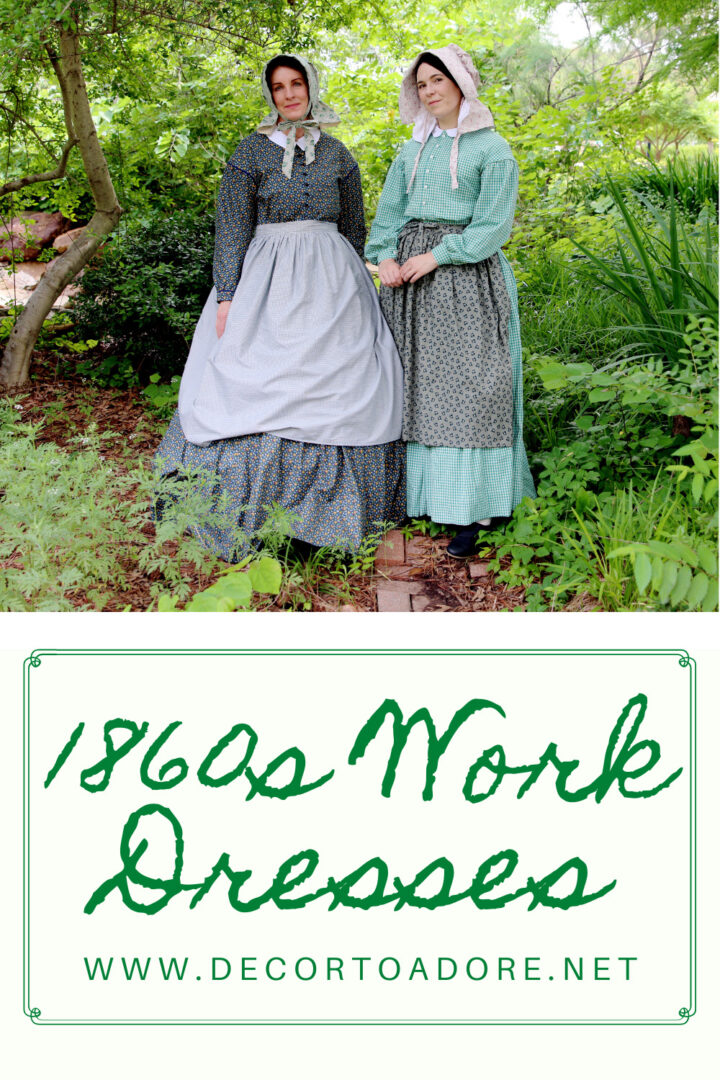
1860s Work Dresses
I began my historical costuming journey back in 2016. My attempt to make a historically accurate dress began with the Butterick B5831 pattern.

A big first error was that I didn’t do enough historical research. My second error was that I made the dress out of heavy quilting cotton.
I was inspired when I saw that my friend Dixie had made a similar mistake in using heavy cotton for the very same pattern in her first foray into historical clothing. You may enjoy this post which covers Dixie’s remade 1860s Work Dress and her accessories.
1860 Dress Style Hallmarks
I decided that it was time for me to remake my first dress as well. It began with more research.
In the early 1860s, the full skirt silhouette was created with a cage crinoline or hoop skirt. This support system had emerged in the late 1850s. It consisted of a series of circular steel or whalebone hoops of various sizes that were attached with vertical bands of tape or braid. The hoop skirt eliminated the need for multiple heavy petticoats to achieve a fashionable skirt width.
Courtesy of the KCI Archives
By the mid-1860s the skirt style would begin to change shape. It became flatter and more narrow in the front yet still full in the back. This transition would lead to the first bustle-era style.
Princesse Pauline de Metternich, 1864, courtesy of The Getty.
The bodice was generally closely fitted with a high waistline. Most bodices fastened down the front with buttons or hook and eyes. Variety was achieved with a band collar or a jewel collar which was often worn with a removable decorative collar. Sleeves began well below the natural shoulder line. Long sleeves were worn during the day. The popular “pagoda” or bell sleeves of the 1850s had given way to a more fitted sleeve such as the coat or Dolman sleeve or the fuller Bishop or Garibaldi style. These last two sleeve styles were often gathered into a cuff at the wrist.
I made a Garibaldi-style blouse and matching skirt back in 2019.
Extant Examples
Looking at old daguerreotypes and photographs as well as studying extant (surviving antique) dresses of the time is my favorite form of research.
This hand-sewn cotton dress features a lined bodice, jewel neckline, and dropped shoulders. Same fabric piping is present at the neck, arm syces, and waist.
Courtesy of University of New Hampshire
This indigo-dyed cotton work dress features a gathered bodice attached to a plain yoke. The skirt is gathered to a fixed waistband. A band collar and dropped sleeves complete the look.
Courtesy of Kent State University Museum
This calico work dress with a band collar was well-loved.
Courtesy of Old Sacramento Living History Program
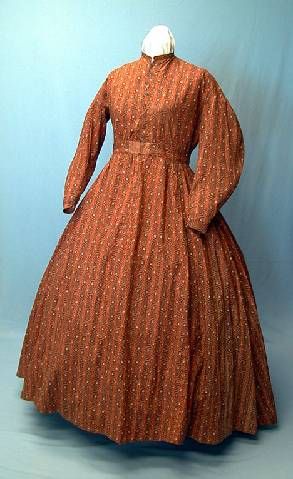
I adore this sweet light blue printed cotton dress. While still utilitarian it features a self-fabric ruffle detail at the upper arm and sleeve opening.
Courtesy of the Chester County Historical Society

These lightweight, almost sheer, cotton dresses were probably created for wearing in warmer summer months.
CCHS

This cream voile from August Auctions offers a closer look at a sheer dress.
Since I will most often be wearing this dress at Little House-themed events I also took note of a Helen Sewell drawing in Little House in the Big Woods.
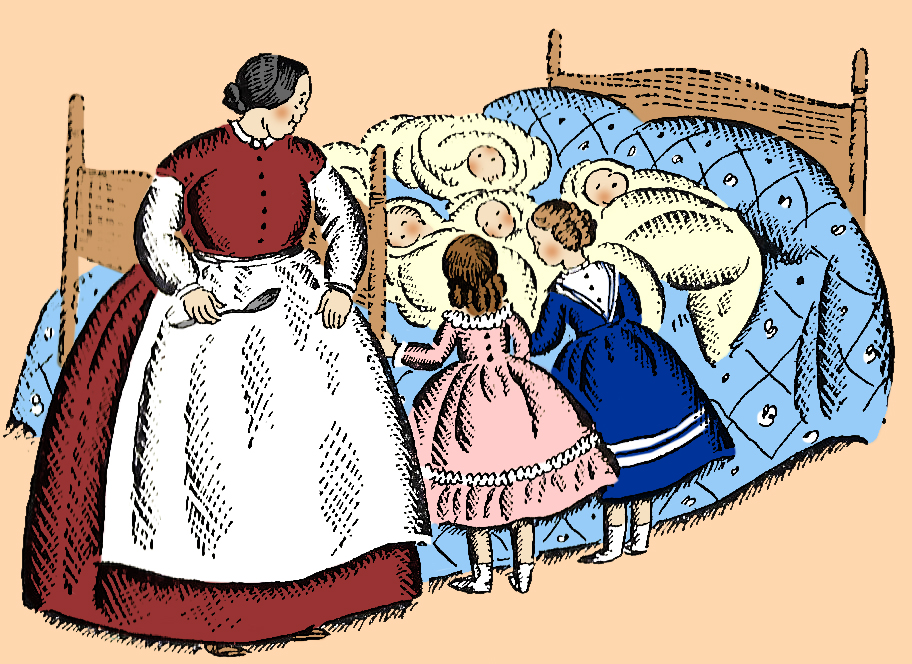
Dress Changes
- The bodice was taken apart and recut two sizes smaller. I think I could even still go down one more size. (Sigh. Hello seam ripper my old friend.)
- Piping was added to the sleeve head, cuff, and more.
- To make this more of a work dress I also removed one of the skirt panels. It is still incredibly full but easier to handle.
- The sleeves were also slimmed down.
- Antique blackberry buttons make for a sweet finishing touch.
Dixie and I met recently to take photographs of our dresses. Many thanks to her for the following images.

The apron was first made and worn for this 2018 Provencal creation. The classic half apron in a small checked print is timeless.
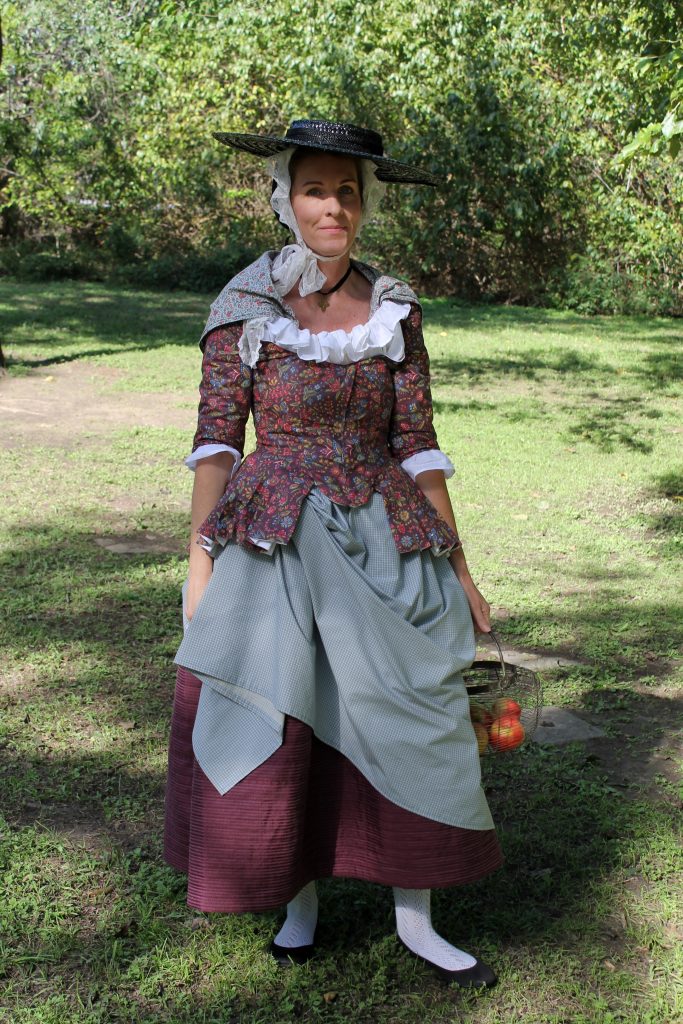
It was a delight to frolic amongst the black-eyed Susans.

The bonnet is based on descriptions in the Little House series and constructions details will be described in my upcoming book.

Many hands make for light work and big smiles!

Ready to work, 1860s style.

🧵🧵 Dixie’s Links 🧵🧵
Dixie’s gorgeous 1840s Ball Gown.
This Week’s Video
I hope you enjoy this week’s video. Dixie and I chat about favorite patterns, tools, and low-cost sewing tips. Click on the link or the image below to view.
I’ll see you on Monday!
Laura
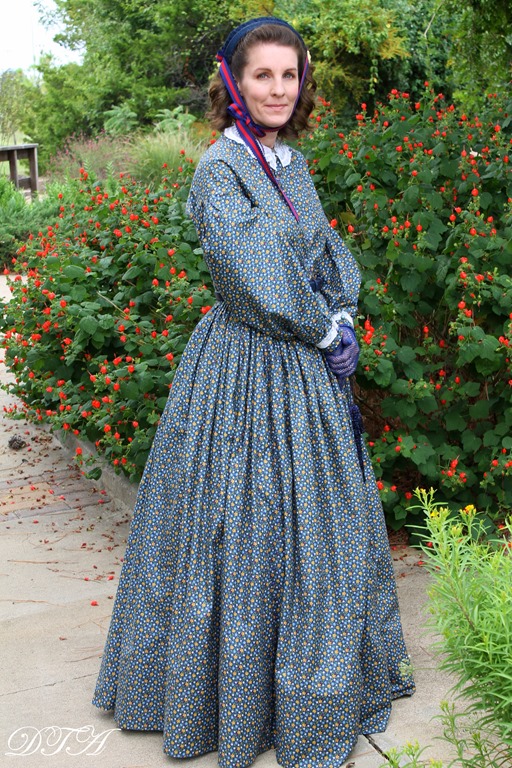
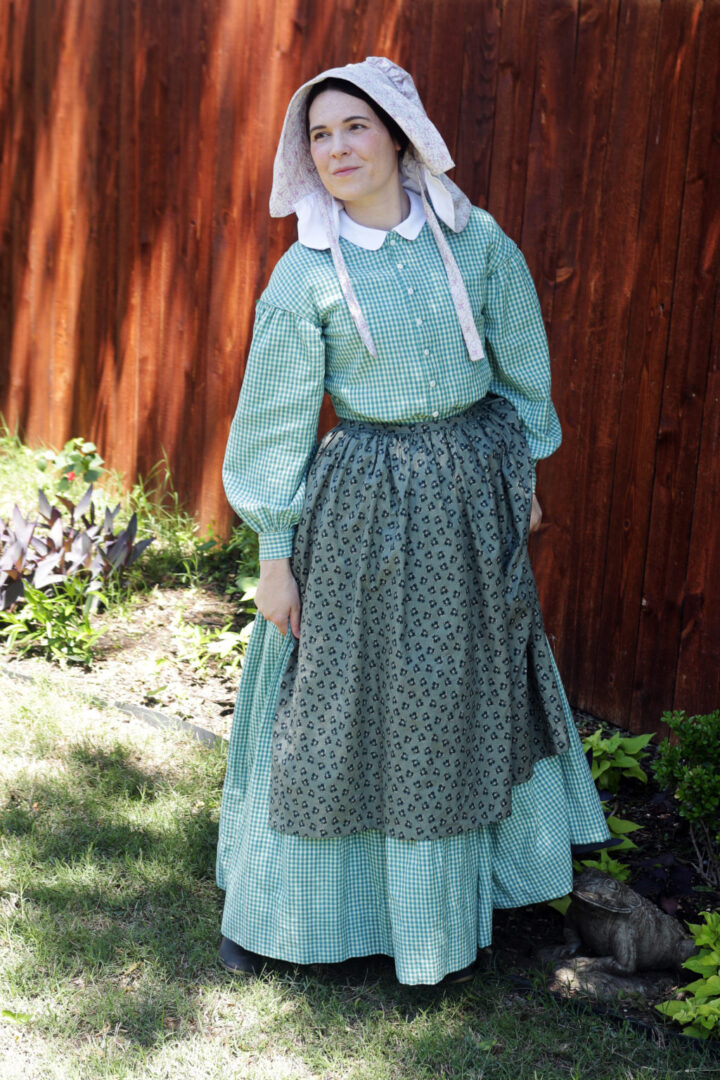

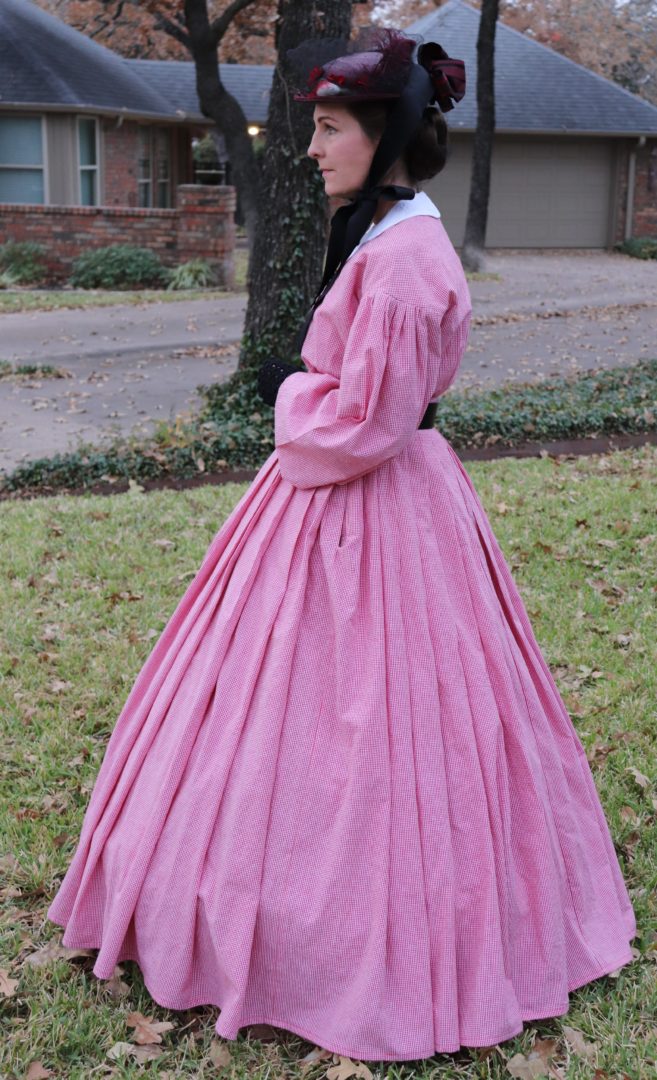


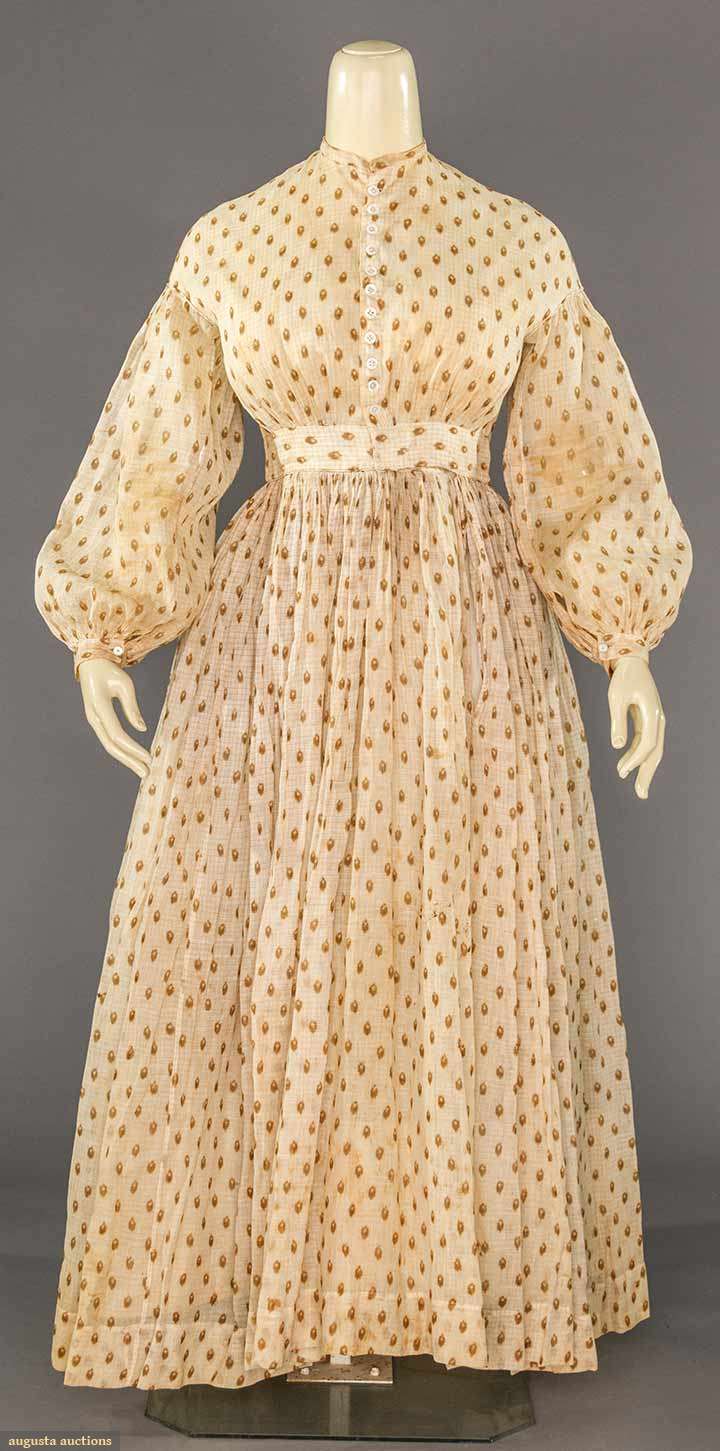
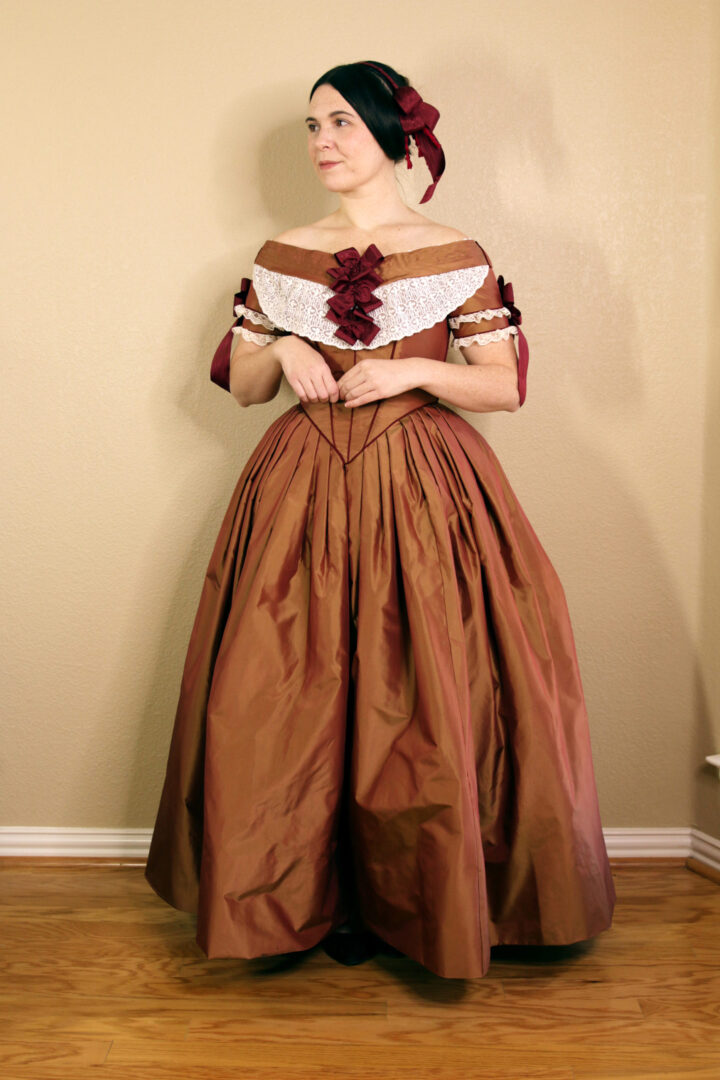
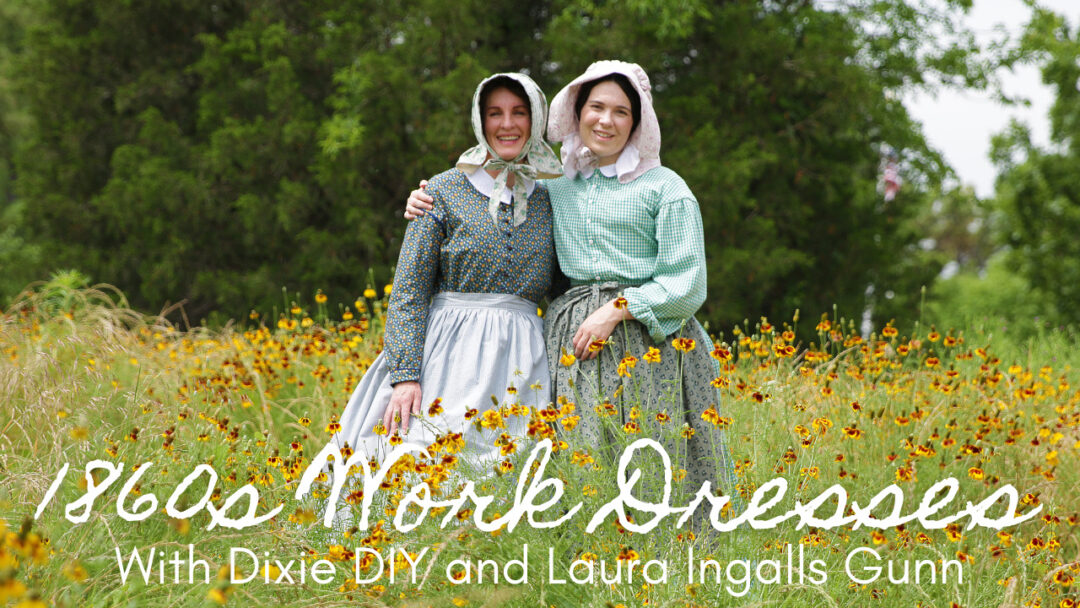
Wow I can’t get over the amount of research that goes into these designs. Congratulations on your upcoming book. You must be over the moon happy.
You have really embraced this and I applaud you for your talents..
Thank you so much for sharing the photos and the information. I found it to be very interesting and I do love all the dresses. I think it would be fun to wear them at least once in a while to a special Little House on the Prairie event. !
I find this so interesting, Laura. It made me smile to know you were redoing something from long ago that wasn’t quite right (even though it looked pretty spectacular to me). I do that sometimes with my older paintings, under the them, “I’m better now.” Lovely work.